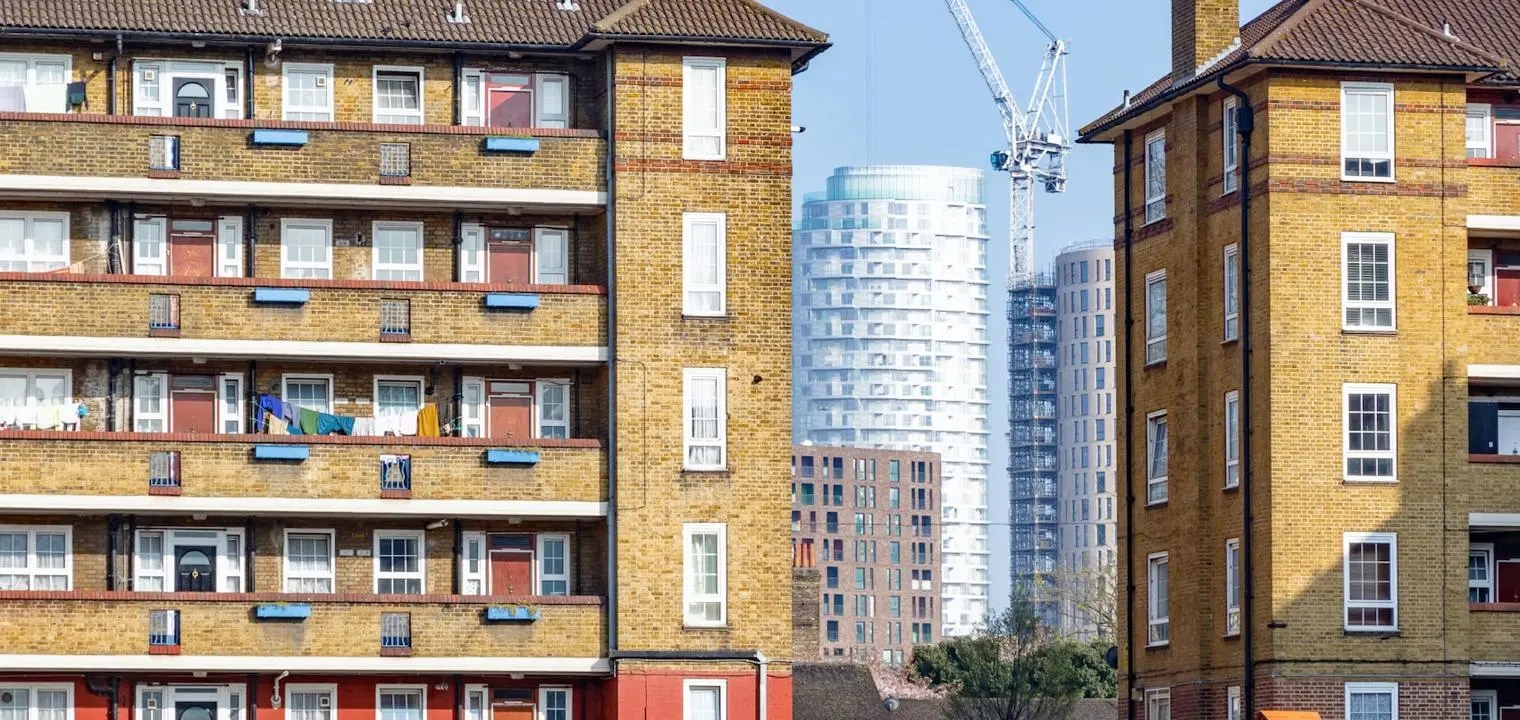Government urban regeneration initiative failed to improve Britain’s most deprived areas

Contents
- Successful urban regeneration will improve not just the area but the outcomes for those living in it
- How successful was the Single Regeneration Budget in improving the outcomes of those living in deprived areas?
- Government New Towns and High Street Funds initiatives may not be as effective as expected
Urban regeneration projects often have two main goals: increasing economic activity and improving the built environment. Interventions in Manchester city centre and London’s Docklands have been praised for revitalising former industrial buildings and attracting investment for commercial landmarks. While the physical changes in these cities are obvious, it is less clear how they affect employment opportunities for people living locally.
Professor Henry Overman of the Department of Geography and Environment’s latest co-authored paper sheds light on the issue by analysing the long-term consequences of the Single Regeneration Budget (SRB). Begun in 1994 by John Major’s Conservative government, it ran until 2002.
Successful urban regeneration will improve not just the area but the outcomes for those living in it
We found no evidence that these jobs went to local people, or improved the employment outcomes of local residents.
The SRB’s broad aims were to tackle unemployment, crime, and poor health and education outcomes in some of Britain’s most deprived areas. It offered support to individuals, for example through retraining workers who found themselves unemployed as old industries moved out. It also paid for improvements to the built environments, through investments in subsidised commercial developments and the enhancement of physical infrastructure.
Professor Overman explains that one rationale for the SRB was to overcome the barriers preventing small businesses from growing in places that had suffered physical decline, with development and refurbishment of workspaces acting as the catalyst for growth in businesses and new jobs in the area.
His research focussed on the effect of such subsidised workspaces, identifying 165 projects supported by the SRB. The total expenditure on these projects, funded by central and local government budgets, EU grants and private sector investment, was £8.2bn (an average of around £50m per project).
How successful was the Single Regeneration Budget in improving the outcomes of those living in deprived areas?
Did this substantial investment act as a catalyst for improved outcomes for local residents, one of the SRB’s main goals? "Unfortunately not," Professor Overman says. "Our research shows that subsidising the development of commercial space through the SRB created some additional workplace employment in the targeted places, but we found no evidence that these jobs went to local people, or improved the employment outcomes of local residents.
"We also only partially assess the extent to which these new jobs were actually existing jobs displaced from further afield." Professor Overman adds.
The findings also raise concerns about the notion that physical regeneration combined with skills, training and education for local people helps local residents find work. "Many of the projects that we look at involve this complementary investment in addition to spending on commercial developments and yet we find no effect on employment for residents," Professor Overman says.
Instead of viewing these projects as engines for economic growth, physical regeneration of public spaces and buildings, and new cultural assets, we could look at their potential to yield valuable quality of life improvements for residents.
This research’s conclusions echo findings from the What Works Centre for Local Economic Growth, where Professor Overman is Director. Professor Overman argues that major physical regeneration projects in areas such as the London Docklands, which improved local economic outcomes did so by "fundamentally changing the nature and composition of firms and residents in an area". But, he adds, there is "little evidence that such transformation significantly improves outcomes for existing residents".
Government New Towns and High Street Funds initiatives may not be as effective as expected
The findings mean that we should be cautious about the economic effectiveness of the SRB’s modern day equivalents, such as the government’s New Towns and High Street Funds initiatives, both launched since 2019. Professor Overman says: "More limited investments in the built environment or cultural assets are less likely to deliver significant economic improvements in already struggling areas".
"These interventions generally fail to generate the lasting impact on demand for locally supplied goods and services, which is necessary if they are to deliver economic growth. Even major projects in these areas may simply displace activity from one area to another."
So what makes a regeneration project successful? According to Professor Overman, goals may differ, but it must deliver on these in a cost effective way. And rather than viewing these projects as engines for economic growth, physical regeneration of public spaces and buildings, and new cultural assets, we could look instead at their potential to yield valuable quality of life improvements for residents. Professor Overman says: "They could improve accessibility, encourage outdoor activity, or reduce social isolation. Estate renewal – such as refurbishment, demolition, and building and rebuilding of properties, including public housing estates – may not have much economic benefit, but it can significantly improve the quality of housing for disadvantaged families."
"So if the objective of physical regeneration is to improve the life of local people, value for money may be better served by funding well-evidenced interventions designed to improve quality of life rather than funding interventions which have unrealistic goals for economic growth."
Professor Henry Overman was speaking to Peter Carrol, Media Relations Officer at LSE.
Image: VictorHuang/iStock.
Download a PDF version of this article




